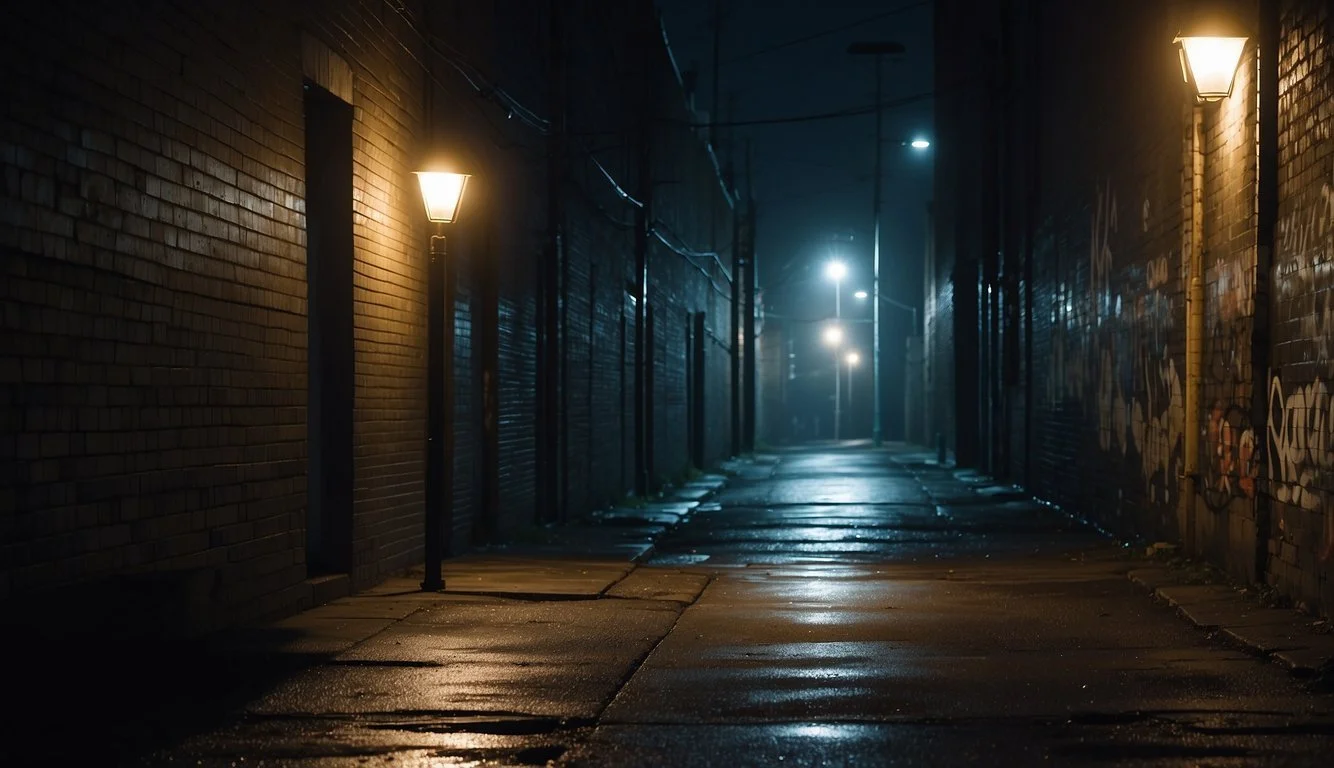Documentary Review: Sly (2023)
An In-Depth Analysis
Sylvester Stallone's journey through Hollywood has always fascinated moviegoers and critics. The 2023 documentary "Sly," now available on Netflix, captures this intrigue by diving into Stallone's storied career and complex personality. Drawing from his experiences, the documentary showcases how Stallone's real-life grit and determination mirror the characters he portrayed on screen, making it a compelling watch for fans and newcomers alike.
The documentary presents Stallone with a balance of respect and reality, steering clear of sensationalism while offering genuine insight into his life. It's not merely about his successes but also his struggles and how they've shaped his career. Directed by Thom Zimny, "Sly" benefits from Stallone's charismatic storytelling, offering a glimpse into the man behind the roles of Rocky Balboa and John Rambo.
Despite some critiques about its conservative approach to controversial topics, "Sly" remains a well-crafted and well-intentioned documentary. It provides viewers with a deeper appreciation for Sylvester Stallone as both an actor and an individual. For those interested in the melding of Hollywood legacy and personal narrative, this documentary is an essential addition to their watchlist.
Overview of 'Sly' (2023)
"Sly" (2023) takes an introspective look at Sylvester Stallone's storied career, examining his impact on Hollywood and personal evolution. Through thoughtful interviews and archival footage, it paints a vivid picture of an iconic actor's journey.
Background and Production
Directed by Thom Zimny, the documentary benefits from Stallone's direct involvement. It premiered at the Toronto Film Festival on September 10, 2023. The project was produced with Netflix, allowing for extensive access to Stallone's personal archives.
The film runs for 95 minutes, weaving in interviews with industry peers like Arnold Schwarzenegger. The production team aimed to create an honest portrayal while steering clear of overly controversial topics.
Plot Summary
"Sly" traces Stallone’s path from his early struggles in acting to his breakout role in "Rocky." The film delves into his personal and professional highs and lows, including his successes and setbacks in the film industry.
Significant attention is given to his roles in "Rocky" and "Rambo," illustrating how these characters mirrored his determination and resilience. The documentary balances moments of triumph with reflective insights into Stallone's off-screen life.
Reception and Critical Acclaim
Critical reception has been mixed. Some reviewers appreciated the engaging personal narrative and Stallone's charisma. Highlights included the film's balanced approach and its focus on the actor's influence in Hollywood.
However, some critics felt the documentary played it safe, missing opportunities for deeper exploration. Despite these critiques, "Sly" was praised for its well-crafted production and insightful moments, making it a notable documentary for fans and newcomers alike.
Technical Aspects
The documentary "Sly" demonstrates careful craftsmanship through its visual storytelling, precise editing, and engaging soundtrack. Each technical component works seamlessly to enhance the viewer's experience and convey the depth of Sylvester Stallone's life and career.
Cinematography
The cinematography in "Sly" is notable for its use of contrasting light and shadow to emphasize key moments in Stallone's journey. Close-up shots effectively capture his expressions, adding depth to his narrations. The film also employs sweeping panoramic shots of iconic locations, from Manhattan streets to Hollywood sets, that underscore the scope of his career. Archival footage is seamlessly integrated, enhancing authenticity. Visual motifs, like recurrent shots of boxing rings, symbolize Stallone's enduring fight both on and off screen.
Editing
Editing in "Sly" shines with its pacing, which maintains a steady rhythm that keeps the audience engaged. Flashbacks are used effectively to connect past events with Stallone's present-day reflections, creating a cohesive narrative. The transitions between personal anecdotes and professional milestones are smooth, avoiding abrupt shifts. Montage sequences highlight significant career moments, making the documentary dynamic and extensive in scope. Archival clips intermixed with recent interviews provide a comprehensive view that is both nostalgic and insightful.
Soundtrack and Score
The soundtrack and score are integral to "Sly," blending emotional resonance with thematic emphasis. Background music is carefully selected to match the tone of various segments, from triumphant orchestral pieces during career highs to more subdued, reflective tracks during introspective moments. Iconic soundtracks from Stallone's films, like "Rocky," are strategically used, evoking a sense of nostalgia. The score enhances the narrative without overshadowing the dialogue, ensuring that Stallone's voice remains the focal point.
Bold use of familiar tunes ties the documentary's themes together, reinforcing Stallone's storied legacy in cinematic history.
Thematic Analysis
"Sly" delves into themes of social commentary, character development, and the narrative techniques used to drive the documentary's storytelling. By examining these elements, viewers gain insight into Sylvester Stallone's impact on Hollywood and his personal journey.
Social Commentary
"Sly" addresses how Stallone's roles in films like "Rocky" and "Rambo" reflect broader societal issues. Rocky embodies the American Dream, illustrating themes of perseverance and underdog triumphs. Rambo, on the other hand, comments on the impact of war and the treatment of veterans. These portrayals highlight Stallone's keen awareness of societal dynamics, making his roles both entertaining and significant.
The documentary also touches on his influence on the perceptions of masculinity in media. Stallone's characters often exhibit intense physicality and resilience, qualities that shaped the era's archetype of male heroes. By doing so, it critiques and contextualizes these cultural norms, showing their evolution through Stallone's career.
Sly doesn’t shy away from addressing the criticisms of Stallone’s films, whether it’s their portrayal of violence or their simplistic narratives. This layer of commentary serves to provide a balanced view, acknowledging both the positive impact and the contentious aspects of his body of work.
Character Development
Sylvester Stallone’s life story, from his challenging childhood to becoming a Hollywood icon, forms the crux of character development in "Sly". The documentary showcases his journey from near obscurity to creating legendary characters that resonate deeply with audiences. It highlights how personal experiences informed his roles and innovations in the film industry.
The film delves into Stallone’s multifaceted career as an actor, writer, and director, showing his evolution and growth in these roles. This complexity adds depth to his character beyond his on-screen persona. His perseverance, adaptability, and creative intuition are prominently featured, painting a portrait of a driven and tenacious individual.
The documentary also explores his personal challenges, such as the struggle for recognition and the balancing act between artistic integrity and commercial success. This not only humanizes Stallone but also provides a comprehensive understanding of his motivations and triumphs.
Narrative Techniques
Director Thom Zimny employs a blend of archival footage, contemporary interviews, and behind-the-scenes clips to weave together Stallone’s story. This combination allows for a rich, multifaceted narrative that engages viewers on multiple levels. The structure is non-linear, reflecting the unpredictability of Stallone’s career trajectory and keeping the audience actively engaged.
Interviews with friends, family, and colleagues add layers of credibility and depth to the narrative. The inclusion of Stallone himself guiding the audience through his life brings authenticity and a personal touch that enhances the documentary’s impact. The cinematography and editing are polished, with a clear focus on storytelling that aligns with the themes explored.
The use of music and sound design is also noteworthy, accentuating key moments and providing an emotional undertone that enhances the viewing experience. This meticulous attention to detail in narrative technique helps convey Stallone’s legacy in a compelling and coherent manner.
Director's Approach
The 2023 documentary "Sly" focuses on Sylvester Stallone's career and personal life, providing a well-rounded look at the influences and stylistic choices of the director, Thom Zimny.
Directorial Style
Thom Zimny employs a clear and focused storytelling approach, ensuring Stallone's life story remains central and engaging. His use of archival footage and candid interviews creates a sense of authenticity.
Editing choices highlight Stallone's evolution both as an artist and a person. By balancing personal anecdotes with career milestones, Zimny offers viewers an intimate portrait without drifting into sensationalism. The film maintains a steady pace, effectively blending moments of reflection with impactful revelations.
Influence and Inspirations
Zimny's directorial style appears influenced by classic biographical documentaries, aiming for depth and subtlety rather than mere spectacle. He draws inspiration from **earlier works that emphasize the subject's personal journey and growth, ensuring that Stallone's narrative is both compelling and insightful.
Incorporating stylistic elements from his previous documentaries, Zimny leverages visual metaphors and thematic consistency. This method helps underscore the complexities of Stallone’s career and personal aspirations. Inspirational motifs seen throughout the film echo the themes present in Stallone's iconic characters.
Interviews and Statements
Interviews in "Sly" provide genuine insights into Stallone's approach to his art. Stallone’s reflections on his acclaimed movies reveal his thoughtful nature as both a screenwriter and an action star.
Zimny gives Stallone ample screen time, allowing him to guide the audience through his life with affable, eloquent conversations. The documentary refrains from controversial topics, focusing instead on meaningful moments and achievements. This choice adds a layer of respect and admiration for Stallone's contributions to cinema.
These interviews, paired with thoughtful statements and personal anecdotes, offer a rounded and respectful picture of Stallone's multifaceted career and personality. It’s evident that Zimny values Stallone’s voice in shaping the narrative.
Cast and Performances
The documentary "Sly" (2023) brings an intimate reflection on the life and career of Sylvester Stallone. It features both leading roles and a supporting cast, each contributing unique perspectives and authentic narratives.
Leading Roles
Sylvester Stallone himself takes the central role in the documentary. His presence is powerful, guiding the audience through his decades-long career. Stallone's charisma and eloquence are on full display, offering insights into his personal and professional life. His storytelling is engaging, giving fans a deeper understanding of his journey from aspiring actor to iconic figure in Hollywood.
Thom Zimny directs the documentary, focusing closely on Stallone. This direction allows Stallone’s natural authenticity to shine, providing a compelling portrayal of a man who has shaped the entertainment industry with his resilience and creativity.
Supporting Cast
The supporting cast includes interviews with individuals who have closely worked with Stallone throughout his career. Frank Stallone, Sylvester's brother, contributes personal anecdotes and insights that add depth to the narrative. Other notable appearances include John Herzfeld and Wesley Morris, who offer professional observations and highlight Stallone's impact on cinema.
These interviews are thoughtfully interwoven, providing a richer context to Stallone's story. Each contributor's perspective brings a unique facet of Stallone’s multi-dimensional career. The supporting cast serves not only to validate Stallone’s legacy but also to illustrate the collaborative efforts that have defined his success.
Cultural Impact
"Sly" (2023) has left a notable mark on both public perception and the field of documentary filmmaking. The documentary stirred discussions and debates, shedding light on Sylvester Stallone's influence in cinema.
Public Reception
Public reception of "Sly" has been largely positive. Fans appreciated the candid portrayal of Stallone's life. The film's appeal extends beyond die-hard Stallone admirers to a broader audience interested in Hollywood history. Rating platforms, like Rotten Tomatoes, reflect a favorable consensus. Audiences praised Stallone's honesty and the film's engaging narrative style. This reception indicates a wide appreciation for celebratory yet insightful biographical documentaries in popular culture.
Influence on Documentary Filmmaking
"Sly" stands out in the documentary genre for its blend of personal reflection and historical context. Directors are likely to draw inspiration from its success in creating a compelling narrative without sugarcoating the subject's life. The film successfully uses archival footage and interviews, setting a benchmark for storytelling balance. It highlights how to humanize iconic figures by emphasizing their vulnerabilities alongside their achievements.
Discussions and Debates
The release of "Sly" ignited discussions about the nature of success and resilience in Hollywood. Viewers and critics have debated Stallone's portrayal, questioning whether it fully encapsulates his impact on the film industry. Some argue that while it celebrates his career, it misses deeper insights into his collaborations and controversies. Such debates underscore the film's role in sparking critical conversations about celebrity documentaries.
Conclusion
"Sly" (2023) offers a reflective and personal look at Sylvester Stallone's extensive career.
The documentary highlights not just his achievements in film but also delves into his behind-the-scenes struggles and triumphs.
Through a series of candid interviews and archival footage, viewers gain insight into the man behind iconic characters.
Directed by Thom Zimny, this 95-minute feature allows Stallone to narrate his journey with a palpable sense of authenticity.
Stallone's interactions with other well-known figures, including Arnold Schwarzenegger, add an interesting dimension, juxtaposing their public personas against their real-life camaraderie.
While some moments feel less in-depth, the film's strength lies in its sincere portrayal of a Hollywood legend.




